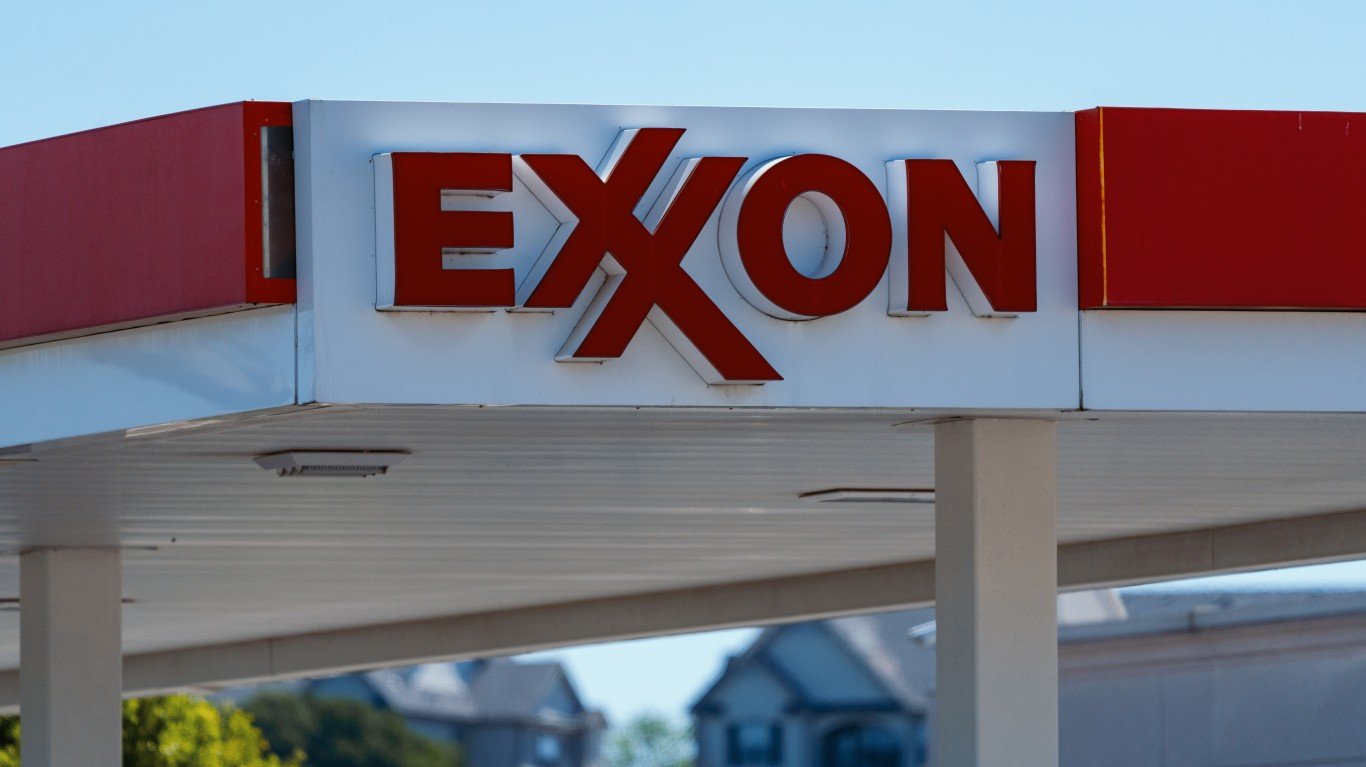

Exxon Mobil Corp. (NYSE: XOM) reported second-quarter 2020 results before markets opened Friday. The integrated oil and gas giant posted an adjusted diluted earnings per share loss of $0.70 on revenues of $32.6 billion. In the same period a year ago, the company reported earnings per share (EPS) of $0.61 on revenues of $69.1 billion. Second-quarter results also compare to the consensus estimates for a net loss of $0.61 and revenues of $38.2 billion.
The quarter’s results included a $0.44 “positive noncash inventory valuation adjustment from rising commodity prices.” Excluding that adjustment, Exxon’s second-quarter loss totaled $0.26.
Second-quarter cash provided by operations fell from $5.9 billion a year ago to zero, and capital spending totaled $5.3 billion, down by 34% year over year. Excluding working capital, asset sales and cash flow from operations totaled $1.5 billion in the second quarter, down from $7.2 billion in the same period of last year.
Net income in the quarter dropped from $3.1 billion a year ago to a net loss of $1.1 billion.
Oil-equivalent production fell by 3% to 3.6 million barrels a day, reflecting a decrease of 3% in liquids production and a 12% decrease in natural gas production.
CEO and Chair Darren Woods said that the company is confident that it can meet its cost-reduction target for the year and based on current projections, “we do not plan to take on any additional debt.” Total debt at the end of the quarter was $69.5 billion, up by $9.9 billion sequentially and by $24.3 billion year over year.
Capital and exploratory spending in the quarter totaled $5.3 billion. For the first half of the year, capex totaled $12.5 billion. Exxon has forecast full-year capex at approximately $23 billion.
The net loss in the company’s upstream (exploration and production) totaled $1.65 billion, compared to a profit of $3.26 billion in the year-ago quarter. The decline was due largely to a decline of $4.5 billion in price realizations.
Downstream results (refining and marketing) increased by $525 million year over year to $976 million. The increase is entirely due to a noncash inventory valuation that added $1.2 billion to the segment’s non-U.S. downstream results.
Exxon did not provide financial guidance but in a presentation to accompany its conference call the company said that upstream production would decline by a total of about 200,000 barrels a day in the third quarter. Refinery runs are expected to improve while refining margins remain weak.
Analysts are expecting a third-quarter loss per share of $0.01 on revenues of $46.9 billion, compared with EPS of $0.67 and revenues of $65.1 billion in the third quarter of 2019. For the full year, analysts are looking for a loss per share of $0.12 on revenues of $192.2 billion.
Exxon paid $3.7 billion in dividends ($0.87 per share) in the second quarter. With operating cash flow of just $43 million, virtually all the dividend payment was borrowed.
The good news for investors is that Exxon has been able to borrow enough cash to pay its dividend. The not-so-good news is that the company had to raise the valuation on its inventories in order to dress up a dismal quarter. On a GAAP basis, rival Chevron posted a net loss per share of $4.44 in the quarter, including a $1.8 billion charge to account for lower crude prices. Exxon’s oil is not worth more than Chevron’s.
Exxon’s shares traded down 2% early Friday, at $41.08. The stock’s 52-week range is $30.11 to $75.18. Analysts had a 12-month price target of $47.38 before this morning’s report. The company’s dividend yield is 8.31% at an annualized rate of $3.48 per share.
Sponsored: Find a Qualified Financial Advisor
Finding a qualified financial advisor doesn’t have to be hard. SmartAsset’s free tool matches you with up to 3 fiduciary financial advisors in your area in 5 minutes. Each advisor has been vetted by SmartAsset and is held to a fiduciary standard to act in your best interests. If you’re ready to be matched with local advisors that can help you achieve your financial goals, get started now.
Thank you for reading! Have some feedback for us?
Contact the 24/7 Wall St. editorial team.
 24/7 Wall St.
24/7 Wall St.

